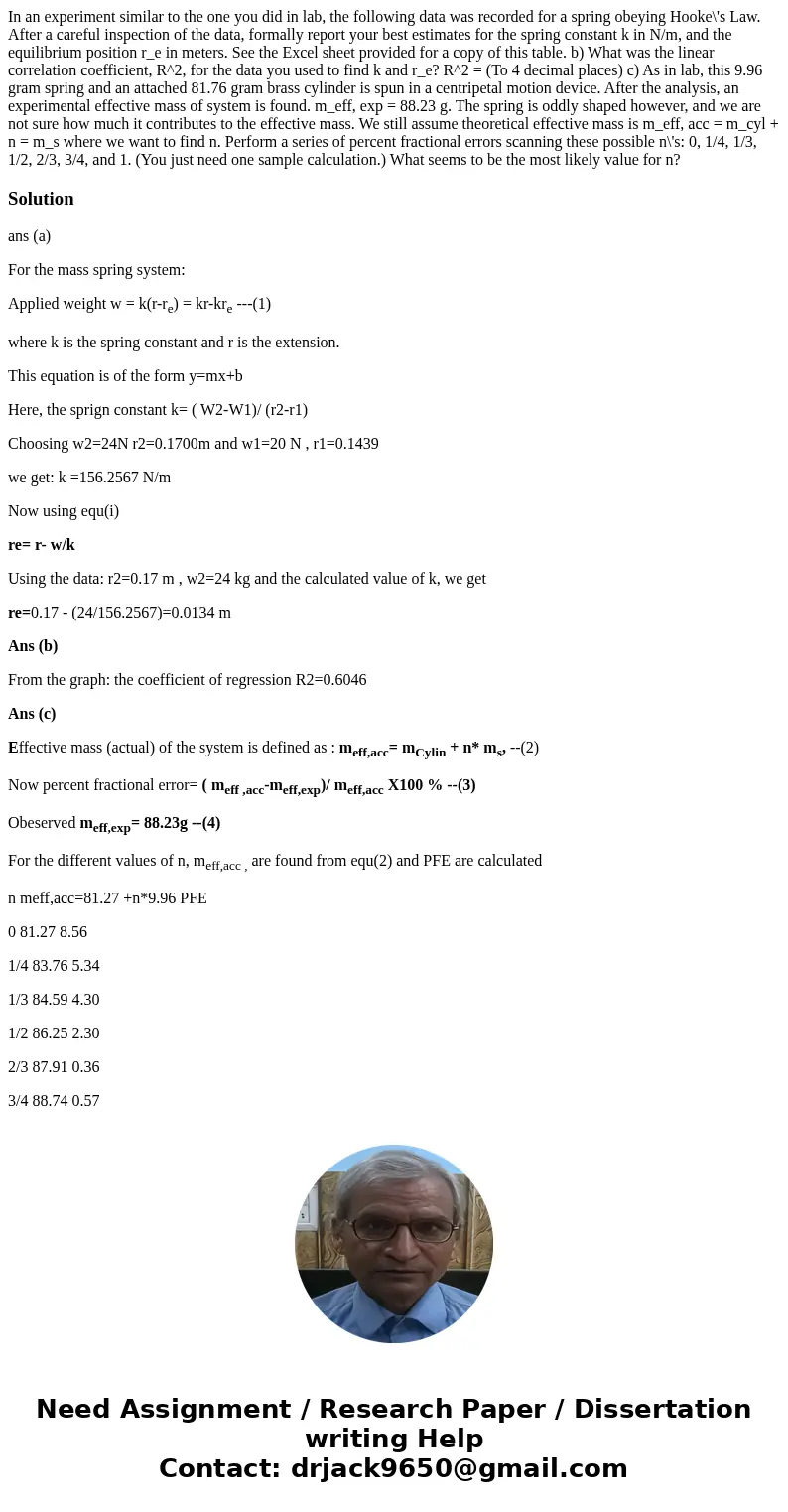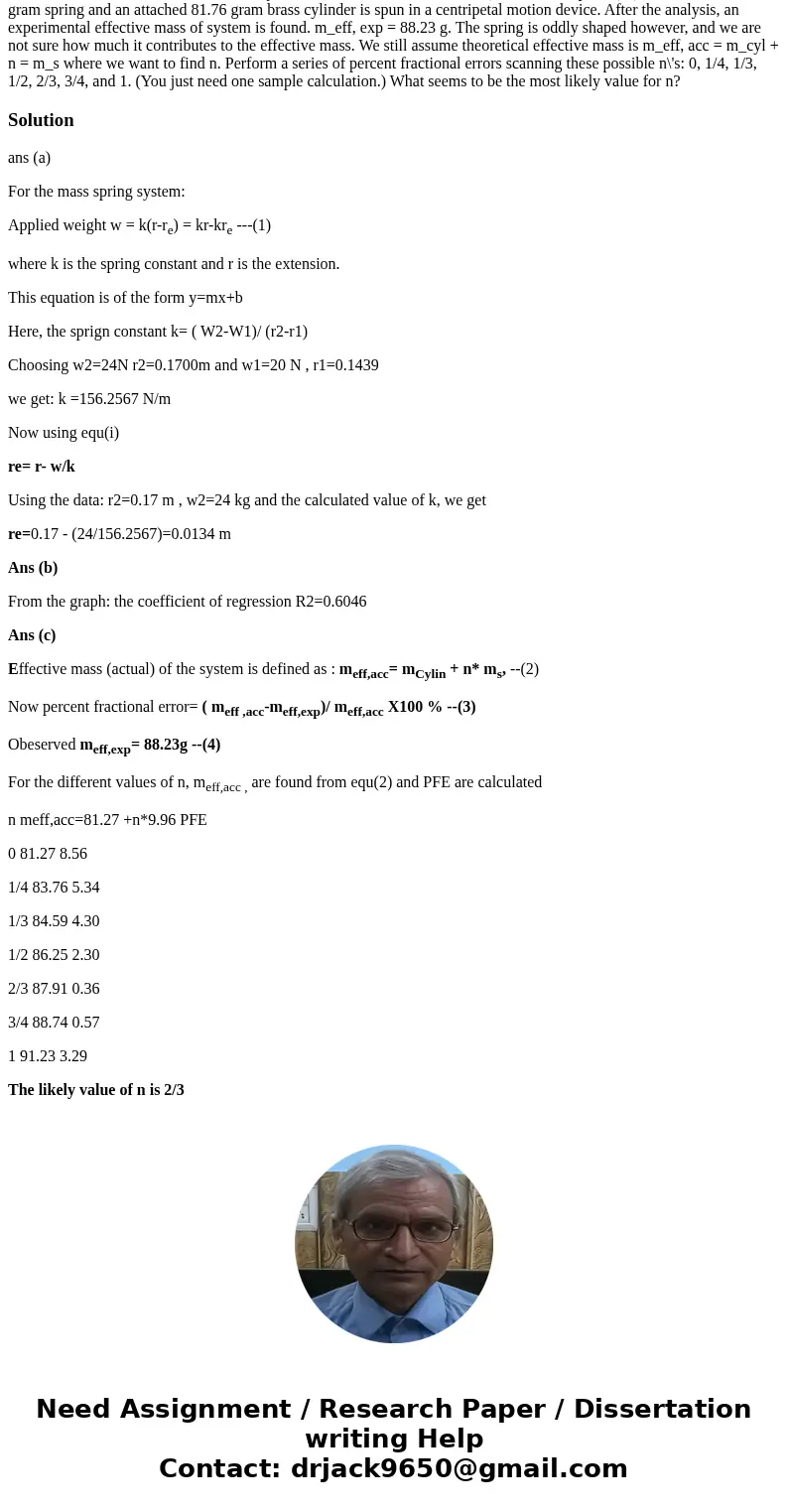In an experiment similar to the one you did in lab the follo
Solution
ans (a)
For the mass spring system:
Applied weight w = k(r-re) = kr-kre ---(1)
where k is the spring constant and r is the extension.
This equation is of the form y=mx+b
Here, the sprign constant k= ( W2-W1)/ (r2-r1)
Choosing w2=24N r2=0.1700m and w1=20 N , r1=0.1439
we get: k =156.2567 N/m
Now using equ(i)
re= r- w/k
Using the data: r2=0.17 m , w2=24 kg and the calculated value of k, we get
re=0.17 - (24/156.2567)=0.0134 m
Ans (b)
From the graph: the coefficient of regression R2=0.6046
Ans (c)
Effective mass (actual) of the system is defined as : meff,acc= mCylin + n* ms, --(2)
Now percent fractional error= ( meff ,acc-meff,exp)/ meff,acc X100 % --(3)
Obeserved meff,exp= 88.23g --(4)
For the different values of n, meff,acc , are found from equ(2) and PFE are calculated
n meff,acc=81.27 +n*9.96 PFE
0 81.27 8.56
1/4 83.76 5.34
1/3 84.59 4.30
1/2 86.25 2.30
2/3 87.91 0.36
3/4 88.74 0.57
1 91.23 3.29
The likely value of n is 2/3


 Homework Sourse
Homework Sourse